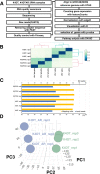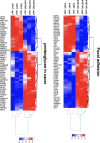Transcriptome analysis to identify the downstream genes of androgen receptor in dermal papilla cells
- PMID: 34983378
- PMCID: PMC8725446
- DOI: 10.1186/s12863-021-01018-6
Transcriptome analysis to identify the downstream genes of androgen receptor in dermal papilla cells
Abstract
Background: Testosterone signaling mediates various diseases, such as androgenetic alopecia and prostate cancer. Testosterone signaling is mediated by the androgen receptor (AR). In this study, we fortuitously found that primary and immortalized dermal papilla cells suppressed AR expression, although dermal papilla cells express AR in vivo. To analyze the AR signaling pathway, we exogenously introduced the AR gene via a retrovirus into immortalized dermal papilla cells and comprehensively compared their expression profiles with and without AR expression.
Results: Whole-transcriptome profiling revealed that the focal adhesion pathway was mainly affected by the activation of AR signaling. In particular, we found that caveolin-1 gene expression was downregulated in AR-expressing cells, suggesting that caveolin-1 is controlled by AR.
Conclusion: Our whole transcriptome data is critical resources for discovery of new therapeutic targets for testosterone-related diseases.
Keywords: Androgen receptor; Dermal papilla cells; RNA-Seq.
© 2022. The Author(s).
Conflict of interest statement
All authors do not have any conflict of interest and competing interest to disclose.
Figures






References
Publication types
MeSH terms
Substances
LinkOut - more resources
Full Text Sources
Research Materials
